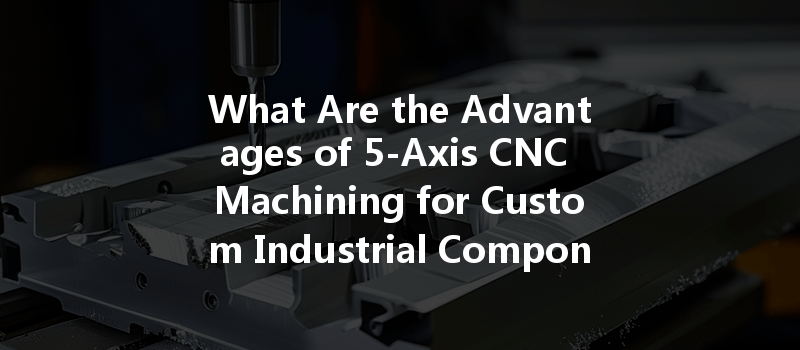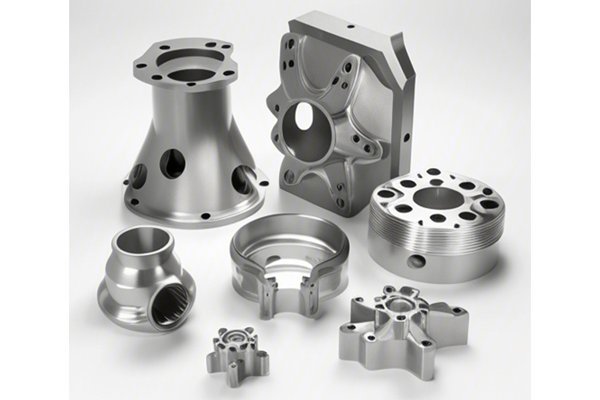: The Evolution of Machining Technology
Did you know that 5-axis CNC machining can reduce production time by up to 60% compared to traditional 3-axis machining? This significant improvement is just one of the many reasons why manufacturers are increasingly opting for 5-axis technology. In the rapidly evolving landscape of manufacturing, staying competitive is paramount, and companies are always on the lookout for innovative solutions that offer both efficiency and precision in producing complex industrial components.
As industries demand higher quality, tighter tolerances, and faster production times, the importance of advanced machining techniques like 5-axis CNC machining has escalated dramatically. This blog will delve into the various advantages of 5-axis CNC machining, how it works, its applications, and why it should be a consideration for businesses looking to enhance their manufacturing processes.
Understanding 5-Axis CNC Machining
To grasp the benefits of 5-axis CNC machining, it’s essential first to understand what it entails. Traditional CNC machines typically operate in three axes: X, Y, and Z. However, 5-axis machining adds two additional rotational axes, allowing the cutting tool to approach the workpiece from nearly any direction. This capability opens up a world of possibilities for creating complex geometries that would be difficult or even impossible to achieve with 3-axis or even 4-axis machines.
The Key Advantages of 5-Axis CNC Machining
One of the most significant advantages of 5-axis CNC machining is the high level of precision it offers. The simultaneous movement of the tool and the workpiece allows for greater accuracy in achieving intricate designs. This is particularly important in industries such as aerospace and medical, where tolerances can be minuscule, and even minor deviations can result in significant failures.
5-axis machining can achieve better surface finishes than traditional methods. The ability to tilt and rotate the workpiece ensures that the cutting tool can maintain optimal contact with the material, resulting in fewer tool marks and a smoother overall finish. This is crucial for applications where aesthetic quality and functionality must coexist, such as in automotive and consumer product design.
By allowing multiple sides of a workpiece to be machined without the need for repositioning, 5-axis CNC machines significantly reduce the time required for setup and production. A part that might take several setups on a 3-axis machine can often be completed in a single operation on a 5-axis machine. This streamlined process not only speeds up production but also minimizes the risk of errors that can occur during manual handling.
5-axis CNC machining excels at creating complex shapes and contours that would require multiple setups or be impossible to achieve with traditional machining. This capability is invaluable for industries that require bespoke or low-volume production of intricate components.
Some examples include:
The strategic angles at which tools operate in 5-axis machining can lead to less tool wear compared to traditional methods. By optimizing the cutting angle, machinists can extend the life of their tools, reducing overall costs and downtime due to tool changes or maintenance.
Applications of 5-Axis CNC Machining

5-axis CNC machining is universally applicable, benefitting multiple industries including:
A. Aerospace
Due to strict regulations and the need for high precision, the aerospace industry relies heavily on 5-axis machining for the fabrication of wings, fuselages, and engine components.
B. Automotive
For automotive parts that must meet high-performance specifications, 5-axis machines are used to create everything from gears to intricate body shapes that undergo rigorous testing.
C. Medical
In the medical field, where precision is paramount, 5-axis machining is used to create surgical instruments, implants, and prosthetics that fit patient-specific requirements.
D. Electronics
The electronics industry utilizes 5-axis machining for manufacturing high-precision components such as circuit boards, sensors, and cases for electronic devices.
Benefits Over 3-Axis and 4-Axis Machining
While 3-axis and 4-axis machining has served well for many manufacturing needs, they come with limitations:
By contrast, the versatility of 5-axis capabilities allows for complex, multi-dimensional cuts in a more streamlined manner.
: Why You Should Consider 5-Axis CNC Machining
Investing in 5-axis CNC machining technology offers businesses unparalleled advantages, from improved precision and surface finish to increased efficiency and the capability to tackle complex geometries. As industries continue to pursue innovative manufacturing solutions, adopting advanced machining techniques like 5-axis CNC machining may prove to be the differentiator that elevates a company’s capabilities to meet modern demands.
In summary, 5-axis CNC machining is more than just a tool; it’s an essential technology for companies looking to excel in the competitive landscape of manufacturing. With an ability to enhance production efficiency, improve quality, and reduce cycle time, this approach is worth considering for anyone involved in producing custom industrial components. By understanding and leveraging this technology, businesses can stay ahead of their competitors and successfully navigate the challenges of tomorrow’s market.
Final Thoughts
In the evolving field of manufacturing, where demands for precision and speed are high, the decision to implement 5-axis CNC machining can greatly influence a company’s capacity to deliver top-quality products. Remember that investing in cutting-edge technologies transcends mere acquisition; it encapsulates a commitment to innovation, quality, and sustainability. Take the time to assess how 5-axis CNC machining can fit into your production strategy to unlock new levels of efficiency, quality, and customer satisfaction.
As industries grow, so too should our understanding of how technology can bridge the gap between a simple idea and an intricately designed product. Embrace 5-axis CNC machining and position your business as a leader in manufacturing solutions.






